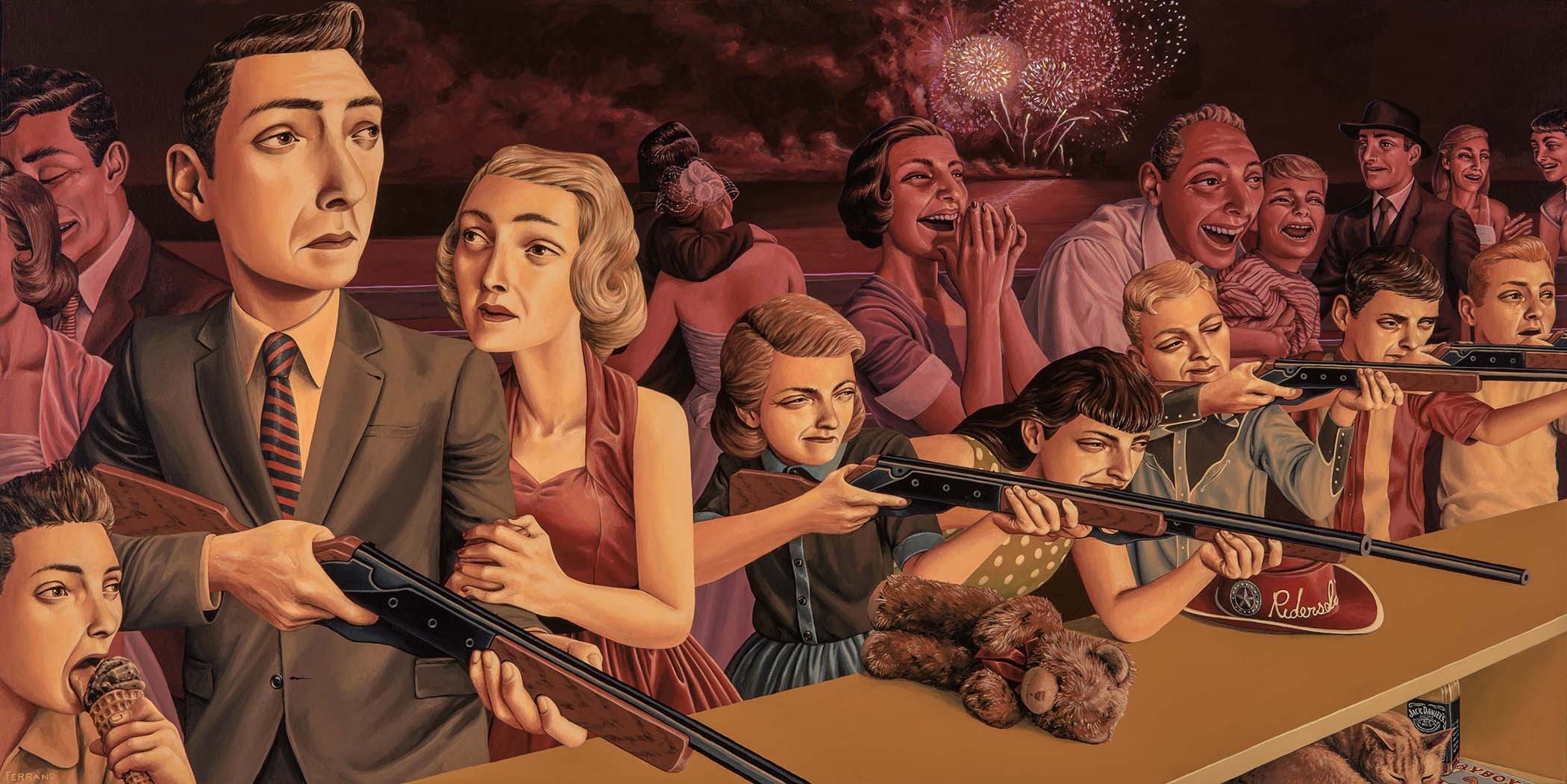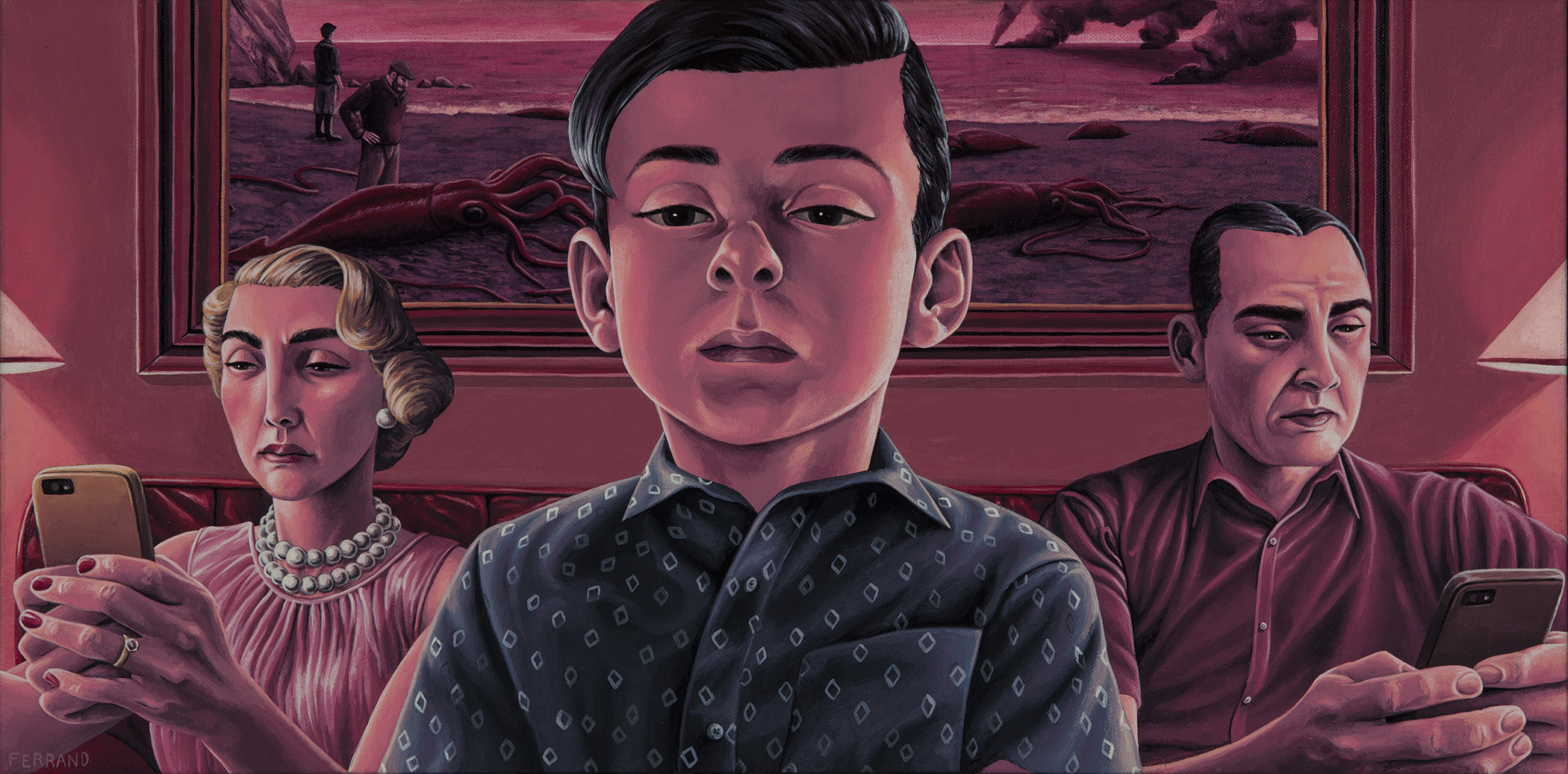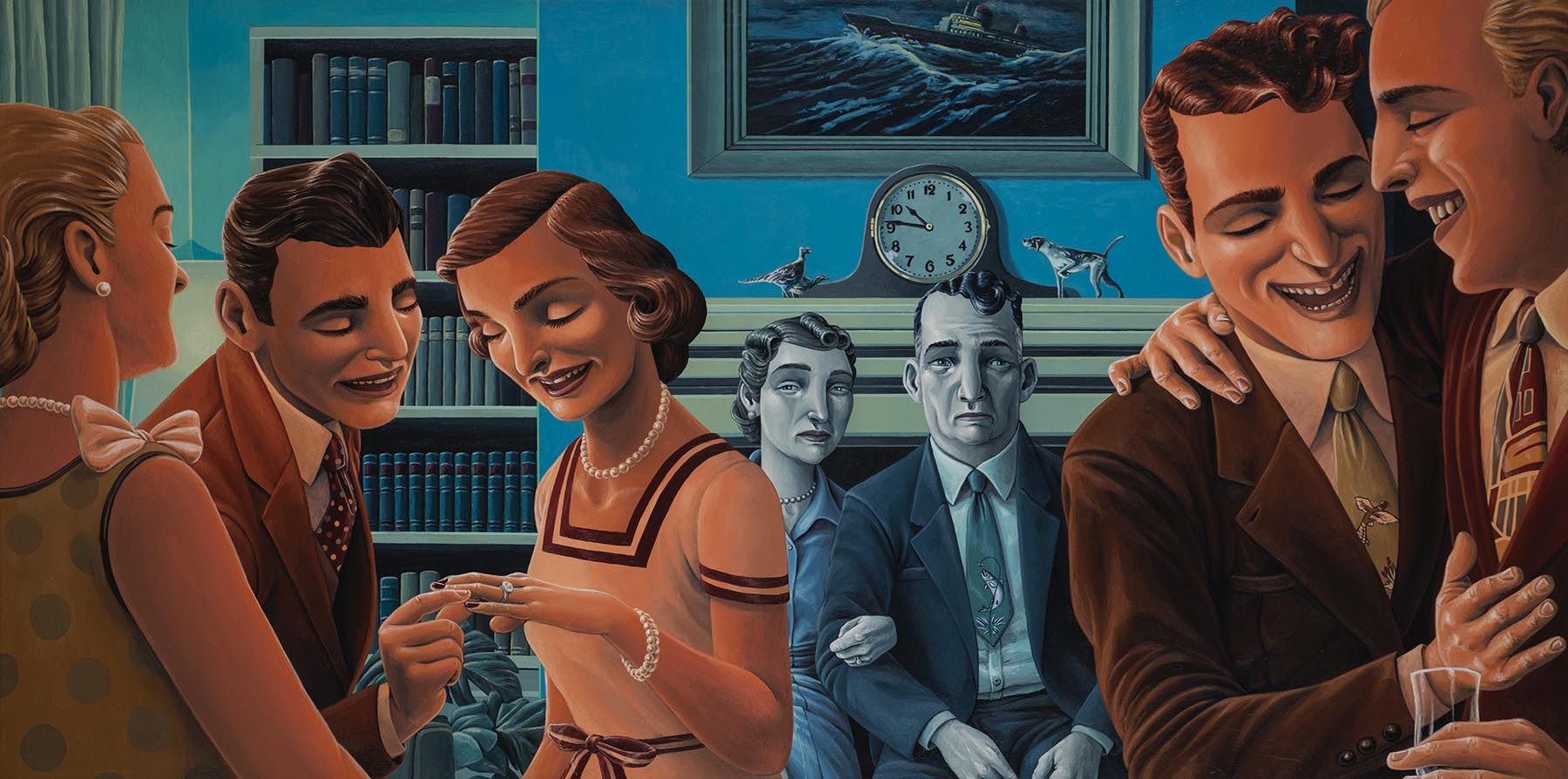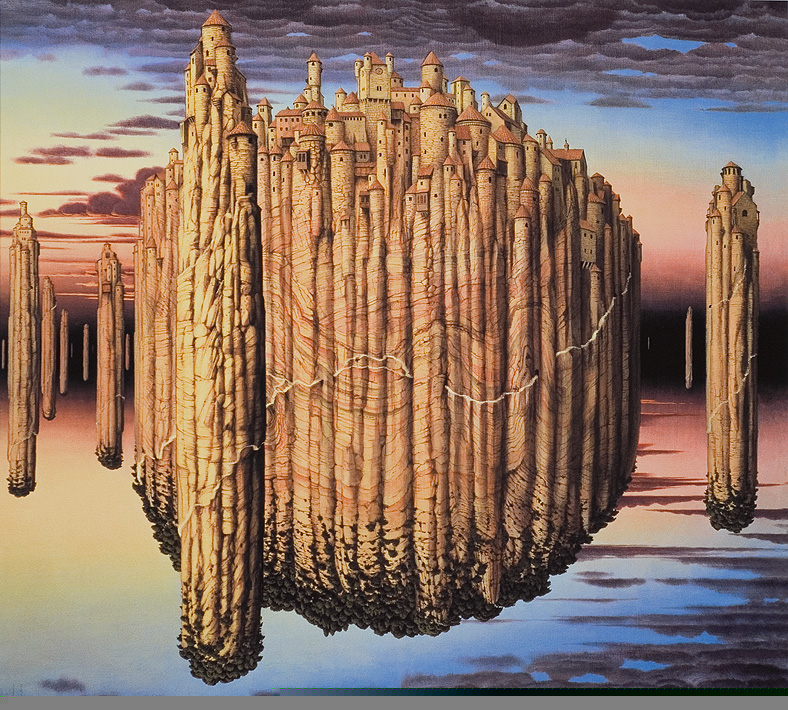
Gregory Ferrand’s cinematic paintings, often laced with anachronisms, speak to a broader sense of isolation belonging to an otherwise social species. The artist’s academic background in film is evident throughout his works, with a full-frame attention to mood and detail. Among the artist’s other influences: Mexican muralists, comic books, and quite evident below, a mid-19th-century aesthetic.




“It is ironic that as innately social animals, we often struggle to feel connected with our friends, family, communities, society, and the greater world,” Ferrand says. “To overcome this, we ignore our instincts and learned biases, hoping to make connections so we can reassure ourselves that we are not alone, that we share the same reality with someone else. But what is ‘reality’? What is ‘the truth’? These questions regarding the human experience have long informed my work. Instead of answering these questions, my paintings invite the viewer to enter the narrative, armed with their own understanding of the world, in order to have an authentic moment to share, identify with, and/or answer these questions themselves.”
Find more from the artist on his site.







 If you go to see the work of
If you go to see the work of 
 Polish artist
Polish artist 
